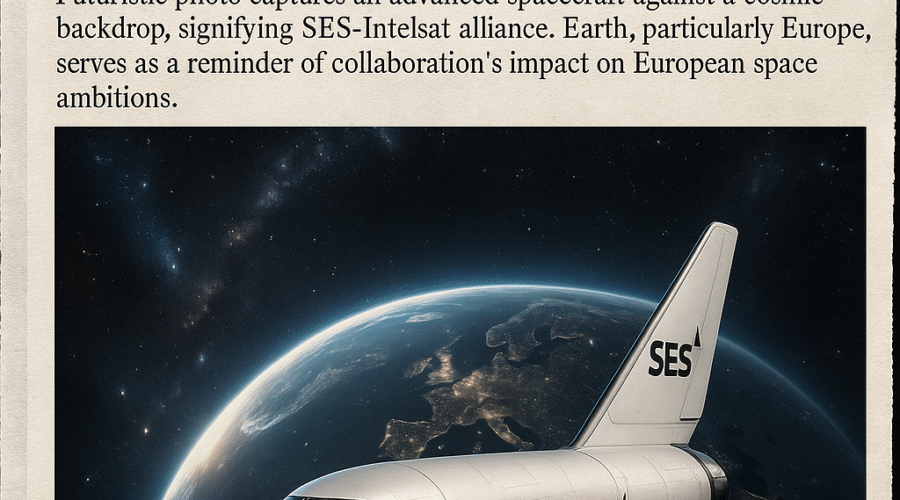The proposed $3.1 billion merger between SES and Intelsat represents Europe’s most ambitious attempt to counter SpaceX’s Starlink dominance, combining 126 satellites across geostationary (GEO) and medium Earth orbits (MEO). While the deal promises €2.4 billion in synergies through fleet optimization and defense contract consolidation[2][7], analysts question whether even this scaled entity can match Starlink’s 7,578 operational low-Earth orbit (LEO) satellites delivering 20-40ms latency[11][20]. The European Commission’s impending antitrust decision on June 10[14][18] will test Brussels’ balancing act between market competition and strategic autonomy in space infrastructure.
💼 Seasoned CorpDev / M&A / PE expertise
Merger Mechanics and Immediate Synergies
Fleet Consolidation and Technological Integration
The combined entity will control 100 GEO satellites (75 from Intelsat) and 26 MEO spacecraft from SES’s O3b network[1][7], creating the world’s largest GEO-MEO operator. Critical to the merger’s value proposition is the phased retirement of redundant ground stations and Intelsat’s abandoned MEO constellation plans[2], with Boeing positioned to benefit from exclusive contracts for the expanded O3b mPower network[2]. The companies project 210 million euros in annual cost savings by 2028 through shared launch contracts and streamlined R&D[2][7].
Defense Sector Implications
With 54% of SES’s Q1 2024 revenue coming from government networks[7], the merger strengthens Europe’s position in secure military communications. The combined entity now serves 37 NATO member states with encrypted GEO-MEO solutions, contrasting with Starlink’s commercial LEO infrastructure that faced scrutiny during the Ukraine conflict[4][17]. However, reliance on U.S.-manufactured satellites (58% of the combined fleet) complicates EU sovereignty objectives[19].
Competitive Landscape Analysis
Technical Performance Benchmarks
While the merged GEO-MEO network offers global coverage with 600ms latency[10], Starlink’s LEO constellation delivers 20-40ms response times comparable to terrestrial fiber[16]. Capacity tests show SES-Intelsat’s combined 1.2Tbps throughput[2] versus Starlink’s estimated 42Tbps network capacity[20], though the European operator maintains advantages in broadcast video distribution (228 million euros Q1 revenue)[7].
Market Position and Growth Trajectories
The merger creates a €3.8 billion revenue entity[7], dwarfed by SpaceX’s $14.7 billion Starlink revenue in 2024[20]. With Amazon’s Project Kuiper planning 3,236 LEO satellites[17], SES-Intelsat risks being squeezed between LEO broadband providers and terrestrial 5G networks. The companies’ 9 billion euro backlog[7] provides near-term stability but lacks Starlink’s 110-country commercial footprint[12].
Regulatory Hurdles and Geopolitical Factors
Spectrum Allocation Challenges
NAB’s FCC filing highlights the merged entity’s control over 96% of U.S. C-band spectrum[13], critical for broadcast distribution. European regulators face pressure to approve the deal before IRIS²’s 2030 launch[19], despite concerns about reduced competition in government satellite services.
EU’s Strategic Autonomy Dilemma
The European Commission’s conditional support for the merger[14][18] aligns with its 6.5 billion euro IRIS² initiative[19], creating a multi-orbit infrastructure partnership with Eutelsat and Hispasat. However, continued reliance on SpaceX Falcon 9 launches (48% of SES’s 2023 deployments)[15] undermines Europe’s Ariane 6 recovery efforts.
Pathways to Relevance in the LEO Era
Hybrid Network Architectures
SES CEO Adel Al-Saleh’s strategy focuses on GEO-MEO integration with Starlink as a complementary LEO layer[9], exemplified by the U.S. Defense Department’s multi-orbit procurement approach. Early trials show 40% cost reductions when blending GEO backhaul with LEO edge computing[16].
Standardization and Interoperability
The merged entity leads the ETSI’s new Multi-Orbit Terminal Specification initiative, aiming to reduce user terminal costs by 60% through modular designs[15]. This contrasts with Starlink’s proprietary technology stack that locks users into SpaceX’s ecosystem.
Conclusion: A Bridge Too GEO?
While the SES-Intelsat merger temporarily stabilizes Europe’s satellite industry, its 8-year technology roadmap[2] struggles to match Starlink’s 6-month iteration cycles. The real test will come in 2026 when both companies’ next-gen satellites enter service alongside Amazon’s Kuiper constellation – a showdown that may determine whether GEO-MEO architectures can coexist with LEO dominance or become niche solutions for latency-tolerant applications.
Sources
https://www.telecomstechnews.com/news/satellite-heavyweights-ses-intelsat-combine-3-1b-merger/, https://www.kratosdefense.com/constellations/articles/ses-to-purchase-intelsat-for-3-1b-massive-synergies-drive-deal-logic, https://www.spaceintelreport.com/ses-to-purchase-intelsat-for-3-1b-in-cash-massive-synergies-drive-deal-logic-as-do-starlink-and-amazon-kuiper/, https://unitesi.unive.it/retrieve/78d0cc15-e329-440f-a5de-b2f750ecfa8f/867182-1266880.pdf, https://www.satellitetoday.com/finance/2023/09/28/eutelsat-completes-oneweb-deal/, https://www.gov.uk/government/news/oneweb-merger-with-eutelsat, https://www.theregister.com/2024/04/30/ses_intelsat_acquisition/, https://www.pax-intl.com/ife-connectivity/partnerships-collaborations-acquisitions/2023/10/02/eutelsat-and-oneweb-complete-merger/, https://www.teslarati.com/starlink-eu-market-ses-intelsat-deal/, https://reliasat.com/satellite-communications-evolution-from-geo-to-leo/, https://oneworldrental.com/blog/how-many-starlink-satellites-are-in-orbit-in-2025/, https://ts2.tech/en/starlink-global-coverage-and-availability-report/, https://www.tvtechnology.com/news/nab-expresses-concentration-concerns-over-ses-intelsat-merger, https://www.capacitymedia.com/article/ses-intelsat-acquisition-nears, https://www.mordorintelligence.com/industry-reports/europe-satellite-manufacturing-and-launch-systems-market, https://www.comparitech.com/net-admin/starlink-vs-traditional-isps/, https://thenextweb.com/news/europes-3-1b-satellite-merger-wont-rival-musks-starlink, https://www.advanced-television.com/2025/06/05/ses-intelsat-deal-set-to-win-unconditional-eu-approval/, https://www.spacerise.eu/article/iris-lifts-off-as-european-commission-and-spacerise, https://www.space.com/spacex-starlink-satellites.html





